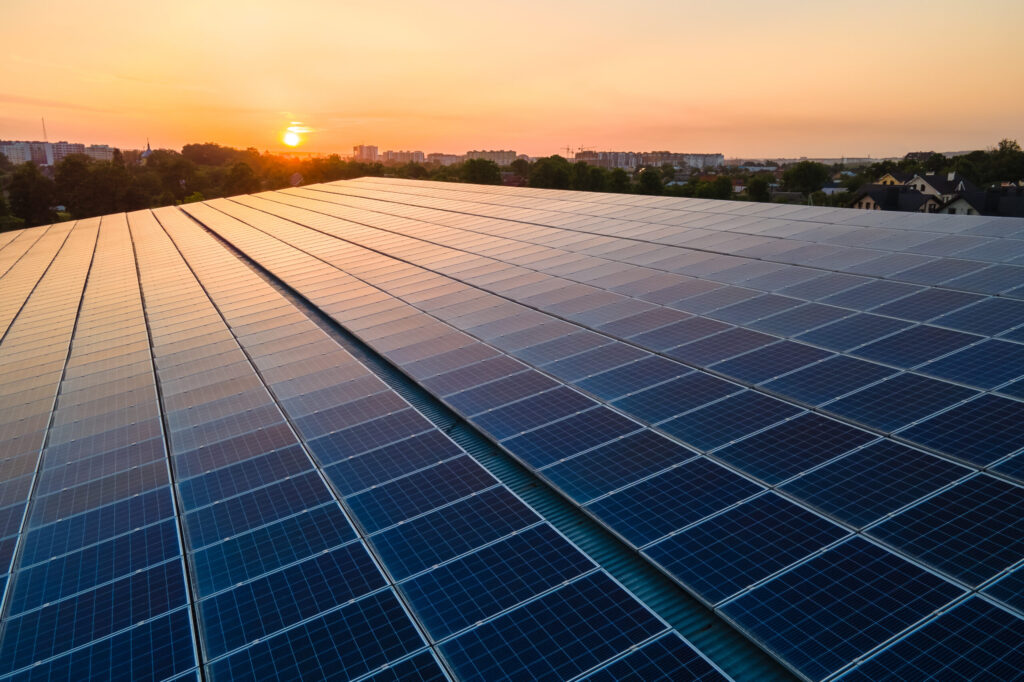Renewable energy is not a novel concept, but its application and significance are continuously evolving. As concerns over fossil fuel dependence and climate change mount, the shift towards cleaner, more sustainable energy sources becomes paramount. For many states, the transition has been a clear mandate. Among them, the Buckeye State stands out for its potential and commitment. Delving into renewable energy in Ohio, we find that residents have several viable options to embrace a greener future. This article explores these alternatives, their benefits, and their potential impact on the state.
The Solar Advantage
Ohio has witnessed a considerable surge in solar installations over the past decade. With advancements in photovoltaic technology, the costs of solar panels have decreased, making them an affordable option for many households. Ohio residents can benefit from both rooftop solar installations and community solar projects.
Rooftop solar allows homeowners to generate electricity for their own use and even sell excess power back to the grid. On the other hand, community solar projects enable individuals to invest in or lease panels from a larger solar array. This model is especially beneficial for those who might not have suitable rooftops or the financial means for a personal installation.
Additionally, the state and federal incentives available for solar installations further sweeten the deal. Tax credits, grants, and rebate programs can significantly reduce the initial investment required, ensuring a quicker return on investment.
Harnessing the Wind
Ohio’s flat terrains, especially in the northwestern parts, offer an excellent opportunity for wind energy generation. Wind farms, consisting of multiple turbines that capture and convert wind energy into electricity, have started dotting the landscape.
For residents, this means not only a cleaner source of electricity but also the potential for economic growth. The wind energy sector can create jobs, from turbine maintenance to administrative roles, fostering local economic development.
While wind farms primarily cater to larger grids, some homeowners are exploring smaller, residential-sized wind turbines. These installations can cater to individual energy needs, especially in areas where consistent wind patterns exist.
Geothermal: Earth’s Hidden Power

Beneath our feet lies a constant source of heat: the Earth’s core. Geothermal energy taps into this heat, providing a consistent and reliable source of power. In Ohio, where temperature fluctuations are a norm, geothermal heat pumps can offer both heating and cooling solutions for homes.
A geothermal heat pump system consists of a series of pipes buried underground. During the winter, the system absorbs heat from the ground and transfers it indoors. In the summer, the process is reversed, and the system cools the home by transferring heat back into the ground.
The efficiency of geothermal systems often surpasses that of traditional HVAC units. Though the initial installation cost can be higher than conventional systems, the energy savings over time usually offset the investment.
Biomass and Bioenergy
Ohio’s rich agricultural heritage provides another avenue for renewable energy: biomass. Plant-based materials like corn, soybeans, and even agricultural waste can be converted into biofuels. These biofuels can be used for transportation or even to generate electricity.
The state has already seen the establishment of biogas plants that use organic waste to produce methane. This methane can either be used directly as a fuel or converted into electricity.
What makes bioenergy attractive is its potential for a circular economy. The waste generated in one sector becomes the fuel for another, reducing the overall environmental footprint and making the most of available resources.
The Role of Hydropower
While Ohio might not boast massive waterfalls or rapid rivers, it does possess a potential for small-scale hydropower. Existing dams and water infrastructure can be retrofitted to generate electricity. Even though the capacity might be limited, every bit counts in the shift towards renewables.
The advantage of hydropower is its consistency. Unlike solar and wind, which can be intermittent, flowing water can generate power continuously, making it a reliable energy source. For Ohio residents, this means a stable and potentially cheaper source of electricity in the long run.
The Role of Policy and Legislation
The success of renewable energy integration in Ohio is not solely based on the state’s natural resources and technological advancements. A significant aspect of this transition relies on policy and legislation that encourages and fosters renewable energy growth.
Ohio has already made strides in this direction. The state has recognized the importance of setting benchmarks and goals for renewable energy adoption. By putting in place Renewable Portfolio Standards (RPS), Ohio has signified its commitment to ensuring that a specific percentage of its electricity comes from renewable sources. These standards motivate utility companies to invest in renewable projects or buy renewable energy credits, thus propelling the entire energy sector toward sustainability.
Furthermore, the state is actively revisiting its zoning laws, permit processes, and other bureaucratic procedures to make it easier for renewable energy projects to take off. Streamlining these processes is crucial because, in the past, many promising projects faced hurdles not due to technological limitations but because of red tape.
The Economic Benefits of Going Green

While the environmental advantages of renewable energy are evident, it’s also essential to consider the economic benefits that this transition brings. Renewable energy projects, whether they’re large-scale wind farms or small community solar projects, create jobs. From engineers and technicians to sales representatives and administrative professionals, the renewable energy sector offers a myriad of employment opportunities.
Additionally, as Ohio moves towards renewable energy, it reduces its dependency on imported fossil fuels. This shift not only saves the state money but also insulates it from the volatility of global oil and gas prices. By generating energy locally, Ohio can invest more within its borders, leading to economic growth and stability.
Moreover, renewable energy projects, particularly wind and solar, have relatively low operational costs once they’re up and running. This factor can lead to competitive electricity prices for consumers in the long run, ensuring that Ohio residents benefit financially from the state’s green transition.
Educating the Public
For renewable energy to truly take root and grow in Ohio, public awareness and education are paramount. Many Ohioans are still unaware of the benefits of renewables or harbor misconceptions about their feasibility and reliability.
Community workshops, school programs, and public campaigns can play a significant role in dispelling myths and illuminating the advantages of renewable energy. By emphasizing both the environmental and economic benefits, these educational initiatives can drive home the message that renewable energy is not just a passing trend but a sustainable and viable future for Ohio.
Renewing Ohio’s Future
Renewable energy isn’t just a buzzword; it’s a necessary path towards a sustainable future. For Ohio residents, the options are diverse and promising. Whether it’s harnessing the sun’s rays, capitalizing on wind currents, tapping into the Earth’s heat, making the most of agricultural waste, or utilizing flowing water, there are opportunities aplenty.
By adopting renewable energy, Ohio can reduce its carbon footprint, foster economic growth, and pave the way for a cleaner, greener future. It’s not just about energy; it’s about building a legacy for future generations. As Ohioans explore and embrace these options, they play a part in shaping a resilient and sustainable future for their state.
Powering Forward with Renewables
As we’ve explored, Ohio’s potential for renewable energy is vast and varied. It presents a unique combination of natural resources and technological advancements that can usher the state into a new era of sustainability. For residents, this shift isn’t just about reducing monthly bills or tapping into tax incentives. It’s about participating in a global movement towards a more sustainable future. By embracing renewable energy options, Ohio residents are not only securing their energy independence but also contributing to a brighter, cleaner world.


